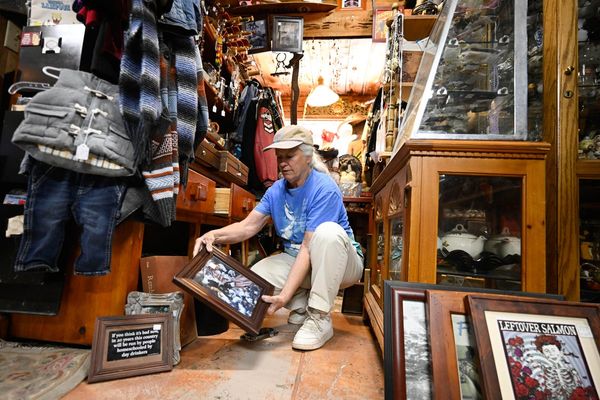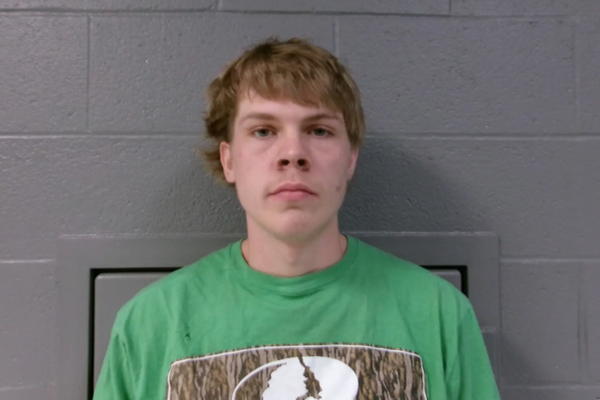
More than 7,000 public sector doctors in New South Wales, across different specialties and levels of seniority, are taking industrial action between Tuesday and Thursday.
The strike called by the doctors’ union, the Australian Salaried Medical Officers’ Federation (Asmof), comes as bargaining with NSW Health over a new pay deal and better working conditions has broken down.
The Minns government has offered a pay rise of 10.5% over three years, while Asmof has sought a 30% rise over a “reasonable period of time” to bring doctors in the state up to parity with other states.
Andrew Holland, the executive director of the NSW branch of Asmof, said the action was being taken as members had been pushed to “breaking point”. He said the government had continually failed to address concerns around workload, which was leaving members working “excessively unsafe hours – often 16-hour shifts with limited breaks and backing it up with another 16-hour shift”.
While the NSW government said the industrial action would put patient safety at risk, Holland said “what will hurt patient safety is the status quo”.
But what action is taking place and how will it affect patients in NSW?
What action is being taken?
Ian Lisser, Asmof NSW’s manager of industrial services, said as of Tuesday the number of members participating in the action had risen to 7,000, including junior and senior medical officers across the range of specialties. With around 12,000 public sector doctors in the state, Lisser said it was safe to say at least a third of doctors would participate.
What form the action takes is up to the members within each individual department at each hospital. Asmof organisers have held meetings “department by department, hospital by hospital” and gained support from the senior doctors within each department on what action is feasible without compromising patient safety, Lisser said.
Not all members taking action may be walking off the job – for example, a department might say half of its doctors can strike, with those who don’t walk off the job to have bans on administrative duties, he said. The greatest number of staff who will be walking off the job will be in Sydney metropolitan hospitals – Royal Prince Alfred (RPA), St George, Westmead, Prince of Wales, Liverpool and Nepean, Lisser said.
The only directive the union has given its members is that if they undertake action it has to occur on those three days, Lisser said, and then the members have let the union know what they will be doing – when, where and whom.
What hospital services will be affected?
Some elective surgeries as well as some clinic appointments with a specialist at public hospitals will be cancelled.
The NSW health minister, Ryan Park, said on Tuesday that as a result of the first six hours of the industrial action, 372 elective surgeries had been cancelled and 21 beds closed in hospitals. Of the beds closed, 20 were short-stay beds in emergency departments. There were also 3,020 outpatient clinics and services cancelled, including 486 oncology appointments, Park said.
Emergency services, critical care units, emergency surgery, and trauma services will continue as normal, according to Asmof.
Lisser said the union would direct doctors to work if the plans appeared to leave departments with unsafe staffing levels, and added that much of the messaging from NSW Health was designed to undermine the industrial action.
Which hospital emergency departments will be affected?
The union had ensured that public holiday staffing levels were maintained as a minimum, which Asmof councillor Dr Tom Morrison said meant the number of doctors rostered on emergency and intensive care remained the same, but there were fewer rostered on wards.
On Monday, Park expressed concerns that the union had not provided their plans for industrial action and that patient safety could be compromised, especially because Tuesday was “arguably the busiest and most significant day of the week in terms of our emergency department presentations”.
Park said he was “particularly” worried about the larger metropolitan hospitals, “places like Westmead, St George Prince of Wales, RPA, those type of very large tertiary hospitals that have significant medical workforce”.
But by Tuesday, the NSW health deputy secretary, Matthew Daly, said the government had received more information and was now “feeling a high level of confidence about maintaining safe and accessible services”.
NSW Health’s up-to-date emergency department data showed performance over the 90% benchmark, though Daly noted that this could deteriorate across the strike.
Regional hospitals will not be affected as much because they are mostly staffed by visiting medical officers, who provide medical services on a contractual basis and are therefore not members of Asmof, which is a union for doctors employed in a permanent capacity by the hospital.
Should I go to an emergency department?
Park said if people in NSW are experiencing an emergency, they should not delay seeking help at a hospital. Emergency departments and triple zero will remain open and continue to operate.
However if they were not experiencing an emergency, Park advised people to call Healthcare Direct on 1800 022 222, go to an urgent care clinic or see their GP.
Why is the government saying saying the strike is illegal?
The state’s Industrial Relations Commission (IRC) ordered Asmof to refrain from taking industrial action for the next three months, but the union decided to proceed with its first strike since 1998.
Park said, “I say to the doctors’ union very, very clearly, this action should not be taking place. You wanted the independent umpire in place. The government has put the independent umpire in place, and … the decision of that independent umpire is that Asmof and the doctors’ union should go back to the negotiation table, and should be abiding by that direction, and should not be having this action.”
What does this have to do with the psychiatrists’ negotiations?
The mass resignation of public sector psychiatrists in NSW was an organic movement from within the specialty when, after more than 16 months of negotiations, the state government failed to meet their demand for a special levy to increase their pay by 25% to stem the flow of psychiatrists leaving the state’s public system.
In an 11th-hour bid to postpone the psychiatrists’ exodus, the government asked for an expedited hearing before the IRC. Asmof had been representing the psychiatrists in that matter in court separately to their negotiations with the government in the IRC over pay conditions for all doctors. However, the psychiatrists’ case has been postponed due to the union defying the IRC’s orders not to take industrial action in the matter of the pay for all doctors.
This article was amended on 11 April 2025. We originally reported that 486 chemotherapy appointments had been cancelled when it was 486 oncology appointments cancelled, due to a statement issued and later corrected by NSW Health.







